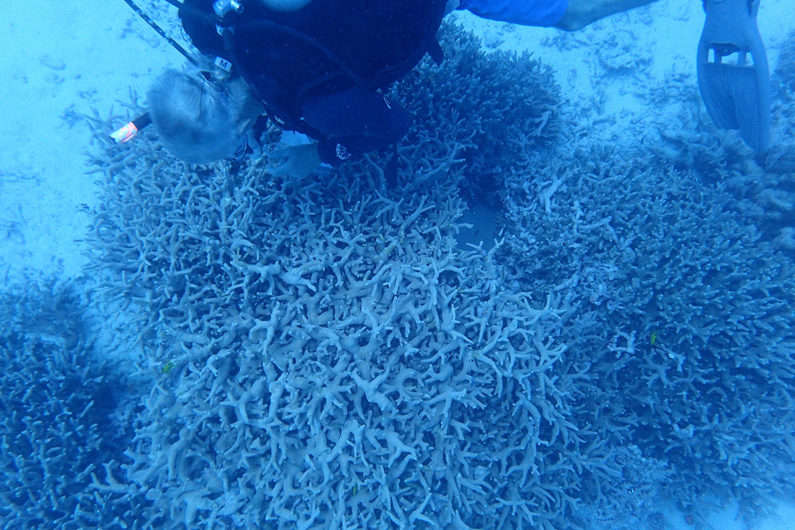
As the Cold War arms race was heating up just after World War Two, Bikini Atoll was showered in 23 nuclear warheads tested over a period of nine years. Scientists from Stanford University have returned to study the effect of long-term radiation exposure almost 60 years after the last A-bomb was detonated.
Against all odds, this former nuclear playground is fighting back and is once again flourishing with corals, crabs, schools of large fish, and sharks.
Bikini Atoll can be found in the Marshall Islands, a chain of volcanic islands and coral atolls between Hawaii and Southeast Asia. The atoll’s coral reef, seabed, waters, and airspace were used by the US for a series of high-yield thermonuclear weapon design tests between 1946 and 1954. One of the biggest, Castle Bravo, is believed to have the highest fallout levels ever attributed to a nuclear test and led to the evacuation of the surrounding native islanders after many quickly developed serious radiation poisoning.
The persistence of the reef is therefore pretty outstanding and unexpected. The researchers are also hoping that the survival of the ecosystem could explain how these species cope with radiation and have managed to not develop cancers. Equally, they hope to investigate whether the area’s biodiversity has any hidden genetic damage. To check it out, they will be sequencing the DNA of the local corals, then tracing the patterns and rates of mutations.
The scientists’ work was recently featured as part of a new PBS television series, Big Pacific, about the marine life of the Pacific Ocean.

“The terrible history of Bikini Atoll is an ironic setting for research that might help people live longer,” Stephen Palumbi, the Harold A. Miller Professor of Marine Science at Stanford, said in a statement. “By understanding how corals could have recolonized the radiation-filled bomb craters, maybe we can discover something new about keeping DNA intact.”
However, it would be wrong to assume the effects of the radiation has not been felt. The expedition started with a report of a mutant shark. After lurking around the underwater hydrogen bomb craters, the researchers believe they tracked down a shark with a missing second dorsal fin, perhaps as a result of radiation-caused mutations. Although the ecosystem appears to be bouncing back “on the surface”, the reef is still haunted by its past.
“We should never forget what we did to Bikini Atoll and its people,” Elora López, a biology graduate student helping Palumbi, added. “We should learn everything we can from it, even things we would have never have thought of before.”
Source:
Source Article from https://worldtruth.tv/bikini-atolls-at-marshall-islands-marine-life-is-thriving-70-years-after-nuclear-bomb-tests/
Related posts:
Views: 0
 RSS Feed
RSS Feed

















 July 20th, 2017
July 20th, 2017  Awake Goy
Awake Goy 







 Posted in
Posted in  Tags:
Tags: 
















